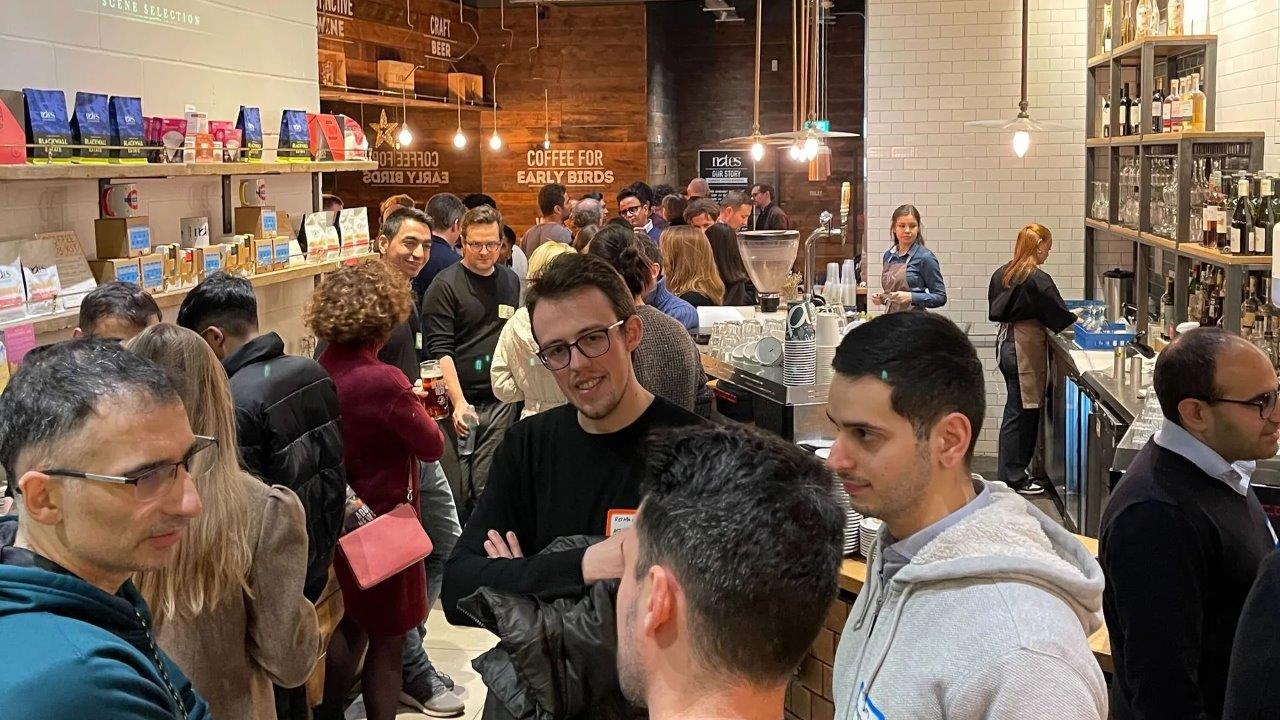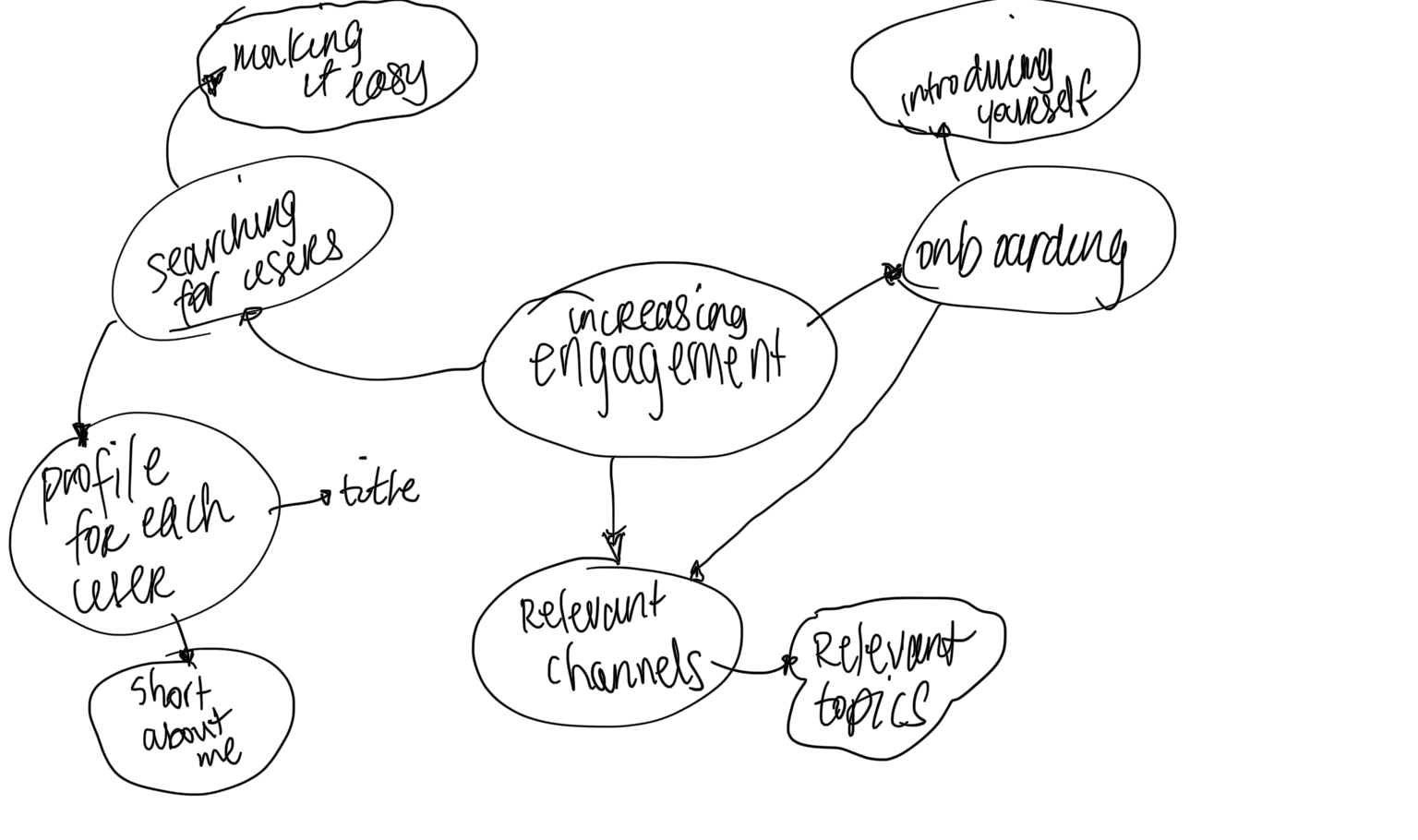

Head of Operations
London Tech Network is a networking community allowing members to connect with people in the technology industry. London Tech Network is a networking community allowing members to connect with people in the technology industry. Within 4 months, I increaed user engagement on their platform by 200%.
As their UX designer, I worked with the founder and CEO in with improving the experience of the slack channel to boost engagement between members.
I conducted an ethnographic study of the slack channel and live events. This allowed me to brainstorm insights to redesign the channels to boost engagement.
Conducting an ethnographic study of the events and the slack channel was the first port of call. I was able to hear the conversations the users were having and I was able to interview users about the slack channel at events. These ethnographic studies helped to frame the questions within the discussion guide.
Ethnographic Study at an Event

Joining the slack channels gave me visibility on how users interact with each other, helping me to see in real time how the slack channel helped to solve their problem. Studying users in the slack channel gave me these insights: Most engagement came from members introducing themselves Users would engagement privately if someone introduced themselves and their job topic/interests were of interest Members were able to hire and get hired after advertising in generic channels Ethnographic studies shaped the user interviews I conducted on slack channel members at LTN physical events.
User interviews were a great way to speak to the slack members at the in person events. I enjoyed hearing their perspectives in person, What was most interesting was the similar answers users gave during the interviews. Their main motivation to joining th slack channels was to: hire people in the technology industry get hired within the technology industry connect with "like minded people" in the industry The interviews and the ethnographic study gave me well rounded qualitative and quantitative data of what users actually do, vs what they think they do, vs what I think they do.Using an affinity map, I grouped similar themes in the data.
I love how affinity maps help you group common themes - helping to see patterns in the data. I was able to see the needs and goals of the users - clarifying how LTN solved their pain points. The main problems about the membership channel were 2 fold:
Affinity Map

I wanted to form a deeper understanding of our users' goals, needs, experiences, and behaviors. So, I created 3 personas for each of our user goals to be achieved. As these were based from the ethnographic study and user interview data, These acted like reference check and signposts, keeping me in check and making sure i was brainstorming to solve user pain points backed by research.
User Persona

Using "How Might We's " I honed in on the persona pain points to generate statement on what can be done to fulfil their core needs and eliminate their frustrations So, I asked, "How Might We"
Staying grounded in the user personas and "How Might We's", I came up with 3 ideas to the ideas of:
Brainstorming

I created created a customer journey map to build a better understanding of how members find and engage withe the LTN slack channel to find opportunities of improvement. The map revealed that the onboarding and retention phase needed some work. Users did not have a problem with joining the slack channel - staying engaged and messaging in the channel was the problem. I created a desired path, including what needs to be done.
User Journey

Increasing the number of channels
I worked with the CEO to increase slack channels, creating based on requests and topics mentioned within research.Member details
I redesigned the member display details to include Job Title, ß a short bio, their linkedin link, and their interestsUser Profile

Onboarding
Members would join without filling out any details. The new onboarding process asked users of their "reasons for joining", and "main area" of expertise, to help admin allocate users to the initial relevant channels. Users would then have the option to opt in/out of channels.Onboarding Questionnaire

I was elated to see that the number of messages posted increased by over 200% over 4 months - the total number of messages sent during the 4 month period 100% more than messages sent over the previous 6 months. Increasing the slack channels I believe helped this as it gave users flexibility in the type of conversations happening through specific topic channels Providing an ability for users to have a bio with their interests/linkedin made it easier for members to connect with other members by providing extra information. Overall, the results aligned perfectly with the initial project goal of increasing engagement within the slack channels.
Uptick In Sent Messages

This was an interesting project because I was optimising an already fully fledged application. Because I was utilised design thinking to improve an already existing app for the benefit of a client, I was constrained to the capabilities of slack. This meant thinking creatively in utilising features that were available, which I am happy I did. This project reiterated to me that prioritizing user needs and preferences significantly contributed to increased engagement. Users appreciate a platform tailored to their requirements. I also learned that continuously gathering feedback and making incremental improvements allowed me to adapt the slack quickly.
If I had more time on this project I would have included surveys in my research to gain a different dimension of data to work with. That being said both the ethnographic studies and the user interviews were pivotal in providing data to improve the user engagement in the channel.